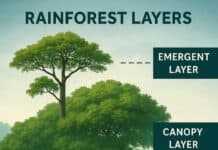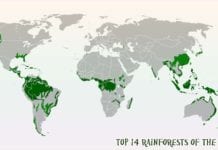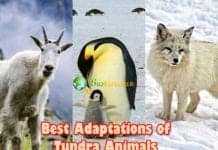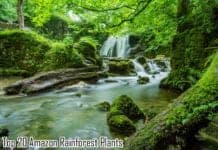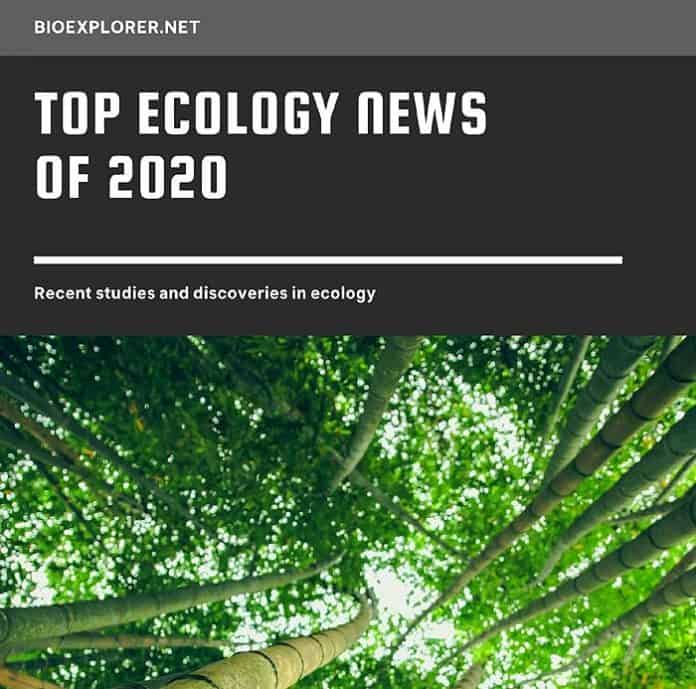
Top 2020 Ecology News: The whole year 2020 was notable for significantly restricted travel and overall mobility for people. Everybody remembers videos of empty streets in major cities. This has made a significant impact on wildlife – sometimes positive and sometimes negative.
One of the significant threats to wildlife currently is climate change. The rise in temperatures worldwide threatens everyone – from large species like narwhals to small insects. Hopefully, current efforts in inventorying and observing plant and animal life can help us see the treasures we may potentially lose better – and invent ways to save them.
Top Ecology News of 2020
Here, the BioExplorer team presents the newest 2020 discoveries that showcase what is becoming of the ecosystems on our planet due to the recent events and the accumulating consequences of human activity in the latest two decades.
1. New Guinea is a botanical treasure trove: scientists produced an extensive inventory of all the plant species on the island [Switzerland – New Guinea – Germany, August 2020]
New Guinea is a large island in the Pacific Ocean. Part of the island belongs to Indonesia, and another is an independent country – Papua New Guinea.
- This particular area has a lush, warm climate. The island itself has multiple mountain regions that separate areas into small “ecosystems.” The island was always famous for its lush animal and plant life.
- Many scientists were fascinated by the abundance of species there, including the co-author of the evolution theory, Alfred Russel Wallace. Currently, 63% of the territory of New Guinea is covered with forests, and 91% of these forests are primary and not planted.
- Primary forests have more species diversity, especially for New Guinea, as the recent study suggests.
- Rodrigo Camala-Lerret, a Spanish-born researcher, trained at the Kew botanical gardens and recently working at the Department of Evolutionary Biology and Environmental Studies at the University of Zurich, Switzerland, has decided to make an inventory of all the botanical diversity at New Guinea.
- For this task, he has recruited 99 experts in taxonomy to analyze all the data on New Guinea plants. As a result, they have discovered that:
- There were at least 13 634 species of different plants growing on the island known to scientists.
- All these species can be divided into 264 families and more than 17 000 genera.
- There were at least 3, 962 tree species found among all the plants entered into this inventory.
- The most dominant group among the local plants were orchids.
- 68% of all the plants recorded were endemic, which means they could be found only in New Guinea.
- This extensive inventory means that New Guinea has the most species diversity among all the islands in the world.
New species are still being discovered on the island. As a considerable amount of the species is scarce and can be under significant threat due to deforestation, it is crucial to make extensive lists and study the local plant life.
Such extensive analysis also helps properly plan protection efforts.
![]()
2. When storing carbon, do not forget the soil – Moors can capture carbon more efficiently than plants [UK, July 2020]
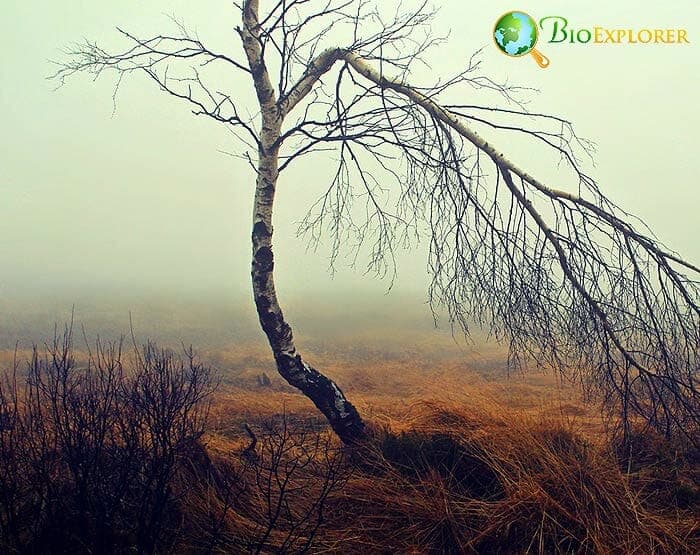
For many years, deforestation was considered one of the drivers of global warming. To combat this trend, tree-planting initiatives have spread worldwide.
Recently, British researchers have shown that studying the conditions before planting trees closely is imperative.
Their recent study published in Global Change Biology illustrates this point:
- Soils can store more carbon than trees, especially in colder areas.
- The amounts of carbon that are stored in the soil are called “carbon stocks“.
- The researchers analyzed the levels of carbon in the soil in the Scottish moorlands covered with native heather.
- The scientists have compared these values with the amount of carbon stored in the soil in the areas planted with birch and Scotch pine around 30 years ago.
- It was found that the amount of carbon in the areas where trees were planted was much lower than in areas with only heather.
- The researchers proposed that planting trees have changed the microflora of the soil.
- The soil got “primed” and started releasing more carbon instead of storing it.
- This analysis shows that planting trees indiscriminately without analyzing the environment could have an opposite result to what was intended.
![]()
3. It is good to be a lichen in Alaska: Alaskan fjords have high lichen biodiversity, study finds [Canada-USA-Norway-Germany-Spain, May 2020]
Lichens are unique organisms formed by the symbiosis of fungi and algae. These organisms are widespread in colder areas, especially further to the North.
A team of scientists led by specialists from the University of Alberta, Canada, has focused on documenting the species of lichens in the Glacier Bay National Park, Alaska. This area has a complex coastline with numerous small fjords.
There are also forests interspersed with grass-covered valleys formed by melting glaciers. Their project has yielded surprising results:
- The team that included scientists from Canada, the USA, Spain, Norway, and Germany used multiple methods to identify and classify lichen species.
- There were 947 different taxa of lichen founds, including various types of fungi that can form lichens. 27 new lichen species were found.
- Some of the lichens found were discovered in the area for the first time. Each fjord has its own assortment of lichen species.
- Only 14 lichen species were common for the whole park, while other species were location-specific.
- According to the new data, this part of Alaska can take second place for lichen biodiversity.
This research shows that even northern areas, traditionally considered less diverse, have previously unnoticed biodiversity. More studies need to be done to understand the area better.
![]()
4. The return of the willow: reintroduction of wolves to Yellowstone has led to the restoration of riverside willows [USA, May 2020]
The reintroduction of wolves to Yellowstone Park in 1995 has led to a cascade of positive change in the area:
- The number of elks destroying local vegetation has decreased.
- Beavers have returned to the area, building dams and changing the shape of rivers.
- Multiple scavenger animals were provided with leftovers from the wolves’ kills.
Recently, another beneficial role of wolves was discovered:
- In the period before wolves’ reintroduction, the elk herds were overly large.
- This led to a significant destruction of the grasslands and several types of trees, including willows.
- With the numbers of elk reduced due to the new predators, willows can grow to average heights.
- Multiple healthy willows were especially numerous near streams.
- Willow thickets have formed, which is vital for many smaller animals.
- Willows are also considered beneficial for freshwater fish, as they create shade and protect certain species from the effects of climate change.
There are probably other cascade effects from wolves returning to Yellowstone, both positive and negative. This reintroduction experiment is unique and would probably bring discoveries down the road.
![]()
5. How man-made canals let invaders through the Mediterranean is flooded with invasive fish spaces through Panama and Suez canals, study finds – [Germany-Panama, September 2020]
The Suez and Panama Canals have let the ships through for over two centuries. Since their foundation, ships have changed drastically. Old canals were no longer wide enough to let them pass, as the recent problem shows.
This led to installing new locks in the Panama Canal several years ago. The expansion and active maritime trade bring ships, new animals, and new problems to established ecosystems.
A joint project by German researchers and specialists from Panama monitored the changes to two natural barriers for possible species crossing: artificial Lake Gatun in Panama and saltwater Bitter Lakes in Egypt. Both bodies of water are now undergoing significant changes, according to the new study:
- The water in Lake Gatun has become saltier, making it a better home for marine fish. 11 marine fish species have migrated to the lake, replacing local freshwater ones in some areas.
- There is a risk of exchange of the species between the Pacific and Atlantic oceans. Bitter Lakes in Egypt used to act as a barrier for fish travel as they had high salt content.
- Despite this barrier, 100 species of marine fishes have crossed from the Red Sea to the Mediterranean.
- Approximately 300 other animal species migrated to the Mediterranean through the Suez.
The project was halted due to the pandemic. Still, the authors do their best to propose solutions to counteract these processes.
![]()
6. The disease is hidden in flowers: bee parasites jump to the bees from flowers [USA, July 2020]
Unfortunately, bees can also be victims of parasitic infections. As bees hold great importance both as pollinators and honey producers, it is essential to understand how these buzzing insects get infected.
A team of entomologists from the College of Agriculture and Life Sciences at Cornell University, USA, have decided to investigate conditions that lead to parasitic infections in bees:
- The researchers have analyzed more than 5, 000 bees and flowers in their experimental plot.
- They have monitored the flower and bee community changes throughout the flowering season. They have searched for the 5 most common bee parasite species.
- The researchers have found that parasites hide in the flowers bees pollinate.
- There are fewer parasites in areas with many flowers of different species, and the bees have lower chances of being infected.
- If social and individual bees are present in the area, the risk of getting infected also decreases.
- Social bees, such as honey bees, are more prone to parasitic infections than lone bees.
- To minimize the risk of infection, protecting non-social bee species and planting more flowers of different species is beneficial.
This discovery can benefit both the honeybee industry and the health of the exosystem, as increasing diversity can benefit both the honeybees and the ecosystem.
![]()
7. The danger comes for narwhals: melting of ice allows killer whales in the Arctic [Canada, May 2020]
Recent high temperatures during the summer season have brought multiple adverse events around the planet. One of the most dangerous ones is the melting of the ice in the Arctic.
Ice was a barrier for multiple species that could enter the area. With active melting, this barrier disappears.
The Arctic Ocean is home to a unique species of unicorn-like whales and narwhals. Narwhals have few predators – mainly humans and killer whales that previously could not enter ice-covered areas of the Arctic.
With shrinking ice, the Arctic has become more accessible to orcas. A recent study performed by Canadian researchers confirms it:
- The scientists captured and marked around 63 killer whales or orcas in the Arctic area from 2009 to 2018.
- According to the scientists’ calculations, there could be around 162 orcas in total in Canadian Arctic. Such several orcas can potentially kill around 1000 narwhals.
- It is unknown how narwhals could be affected by the appearance of new predators. It is also unknown how a new top predator would influence other organisms in the food chain.
![]()
8. Protective measures in the Caribbean work: how law and conservation efforts have saved Nassau grouper [USA, January 2020]
Nassau grouper is a striking large fish that lives in the warm water reefs. Groupers tend to band together during spawning, which was used by fishermen and led to significant overfishing. The situation has recently become so severe that Nassau Grouper was designated critically endangered.
Nassau grouper lives predominantly in the North Atlantic, including the Caribbean Sea. Some of the region’s countries have implemented laws to protect the species.
A team of researchers from the University of California San Diego has studied how these new rules influence the lives of the groupers who live near one of the Caribbean archipelagoes – the Cayman Islands.
- The government of the Cayman Islands has worked with scientists to establish the Grouper Moon Project.
- There were also laws against overfishing introduced. The researchers have collected data on the population of groupers for several years.
- Based on these collected data, they could build a model that reflected the dynamics of the grouper population over time.
- According to their analysis, the joint conservation efforts successfully restored the numbers of groupers.
- This study shows that when government and scientists work together, it is possible to bring species back from extinction.
![]()
9. Previously unnoticed natural treasure: rare sawfish were noticed in Miami [USA, December 2020]
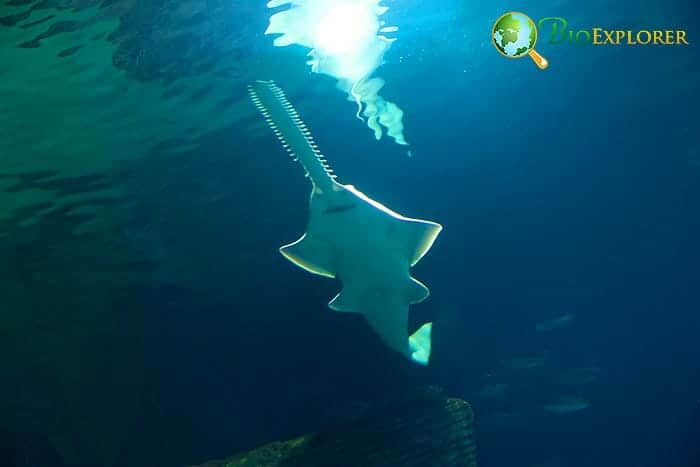
Smalltooth sawfish belong to rays. Young sawfish rely on mangrove forests until they are fully grown, and the latter’s destruction has led to a considerable decrease in sawfish numbers.
Currently, they are considered critically endangered and can be found only in parts of the large area they have previously lived.
A large part of monitoring the well-being of marine animals is relying on citizen reports. Such reports have recently helped a research team with establishing the presence of sawfish in Biscayne Bay, near Miami:
- The researchers combined several sources in their analysis:
- Literature search;
- Citizen reports sent to International Sawfish Encounter Database;
- Current observations were done during surveys in Biscayne Bay.
- According to historical records, there were around 90 sawfish noted in the area in the year 1895.Currently, only 14 sawfish were noticed in Biscayne Bay and the nearby reef.
- Based on the data, it has transpired that sawfish were present in the area for a long time, though they were largely unnoticed.
- The scientists suppose that the recent sightings of sawfish were due to the increased awareness of sawfish importance and recent conservation efforts.
- The presence of sawfish in Biscayne Bay makes the conservationists hopeful for their recovery.
- As Biscayne Bay is located near a large city, water pollution levels are high, which is dangerous for its inhabitants.
- Now, as sawfish in the bay were made known, additional protection efforts may be necessary.
![]()
10. The insects whose resilience was overrated: study finds that insects living in temperate areas are also in danger due to rising temperatures [Sweden, June 2020]
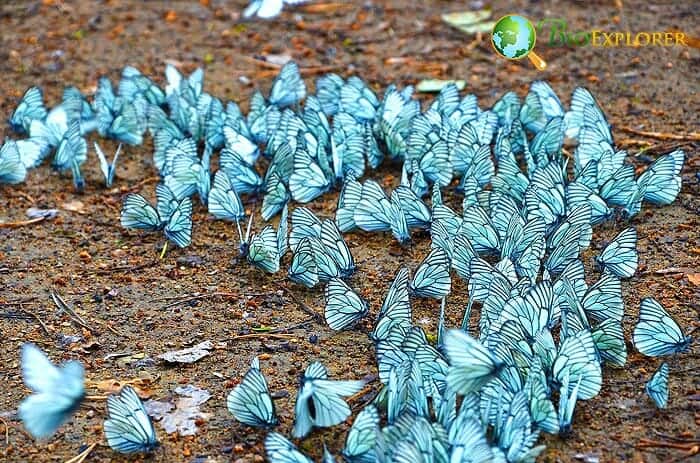
Insects are considerably dependent on the outside temperature. Their tiny bodies can survive only in specific temperature ranges. They cannot be active if the air is colder than a certain threshold and cannot function in extremely hot conditions.
Climate change leads to a considerable increase in temperatures. This is particularly noticeable in tropical regions. Extreme heat is dangerous for tropical insects, as they reach their temperature limits more quickly in the warming climate.
Previously, researchers hoped that insects living in more temperate areas could be better protected. A recent study by Swedish scientists has shown it was not so:
- The researchers have looked into old climate change models and found they needed reworking.
- The existing models did not consider that insects in temperate regions are forced to hibernate in autumn and winter.
- Thus, the insects have a concise window that allows them to gather nutrients and produce eggs.
- The researchers included this factor in their new model.
- They have also included the data on the ranges of temperatures these insects could survive.
- When the scientists compared tropical and temperate species, they found that the range of the temperatures those animals could endure was not significantly different.
- This means that in less warm areas, insects are still in danger from climate change.
- This poses a considerable danger to the environment, as insects fulfill multiple roles in their respective ecosystems.
![]()
The more scientists study ecology and the effects of human activity on the life around us, the more it becomes clear that the balance of life on Earth is very precarious.
We are standing before the era of significant changes. It was already discovered that constant weather changes may cause more insect migration and lead to potential invasions.
Corals respond to the changes in the ocean and prepare for potential extinction. On land, large herbivores face extinction already. All of this means we need to look closely around us and do our best to save our planet as we know it.
![]()


